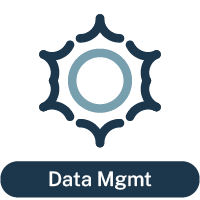The term Minimum Viable Product, with its roots in the software industry, has been part of the lexicon for some time now. Its meaning: something that provides the most basic functionality and value to satisfy early adopters. There’s a similar concept in First San Francisco Partners’ methodology and approach, the Minimum Viable State (MVS).
We define MVS as the essential set of activities or capabilities that must be attained to get buy-in from key stakeholders in the company and launch any aspect of an information management program.
MINIMUM VIABLE STATE FOR INFORMATION-FOCUSED PROGRAMS
In the context of our client work, the MVS is a concept that helps an organization get started in a new program without feeling overwhelmed, becoming mired in indecision and lacking a clear direction.
The MVS is a step toward the future state and is less mature than a recommended state, because the recommended state would provide more direct and measurable business value.
The MVS is truly that minimum demonstration of value so key stakeholders can agree that the data program is a solid, strategic idea and one they will allocate money or resources to move it forward. (Note: It is not a “fallback” state of being in case the organization hits harder times and needs to retract. We have seen that approach create problems for clients where they questioned why one would move beyond a fallback position.)
MINIMUM VIABLE STATE EXAMPLES
In Data Governance, this could be a functioning line of business Operating Model that can identify and resolve data challenges in a more efficient way than accomplished previously. From an enterprise perspective, it could include the identification, prioritization and definition of Critical Data Elements, or CDEs, so that the whole organization is creating and using the data elements based on the same understood characteristics.
Each organization will have a different threshold of what is needed to prove value of the data program. For example, one organization could identify their MVS as the establishment of an Excel-based business glossary of CDEs. Or, it could be the establishment of an Enterprise Operating Model, agreement on Enterprise Critical Data Elements, a Data Definition Process and the implementation of an initial Business Glossary into Collibra.
BENEFITS OF A MINIMUM VIABLE STATE
In the work we do with clients to define what an MVS could mean to them, the conversation tends to include:
- The business impact critical stakeholders need to see in order to support the program
- The change that would create in the organization and how much can be absorbed
- The time it takes to get there, based on the organization’s current level of capability
The MVS concept is an effective way for organizations to get started in a new data program — and do so as simply as possible with a manageable set of tasks by a focused group of individuals. While the MVS is getting close to becoming reality, the organization can look towards their ideal future state and start planning for those new projects, capabilities and resources needed to continue on their journey to make information actionable.


